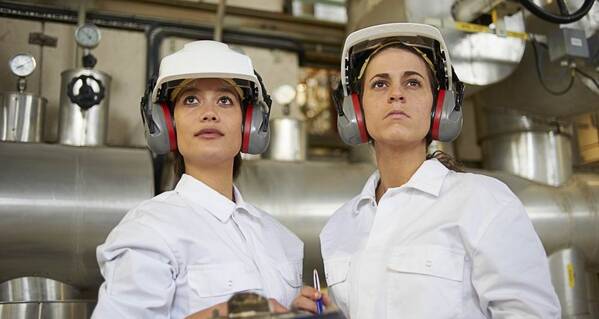

A better environment starts with yourself, which is why my family and I do our utmost to separate our waste neatly. And the more people do that, the better. Of course, residual waste still remains, but I have seen during my visits to waste-to-energy plants that it is still given value. In these plants, they burn the residual waste. The resulting heat is then recovered and converted into energy. A nice, environmentally friendly solution.
Upgrade of Old Waste-to-Energy Plants
Over the years, several new high-efficiency waste-to-energy plants have been built. In older plants that are still in operation, there is a desire to increase steam capacity so they can produce more energy. However, this requires an upgrade of the plants.
Increasing Capacity and Pressure
This was also the case at a waste-to-energy plant I visited some time ago. The capacity of the system needed to be increased, and my contact person wondered if the safety valves in the process could handle this. They were planning to increase the operating pressure, bringing it closer to the opening pressure of the safety valve.
Equipping Safety Valves with a Piston Actuator
The current safety valves from the manufacturer IMI Bopp and Reuther used in this plant on the drum and superheater have an accumulation of +5% and a blowdown of -10% relative to the opening pressure (set pressure).
This was no longer sufficient at the higher operating pressure. Fortunately, I was able to offer a suitable solution. I advised this customer to equip the safety valves with a piston actuator type AK from IMI B&R. This is controlled by a PC 50 pneumatic control unit. This reduces the accumulation to +3% and allows the blowdown to be reduced to 96% of the set pressure.
Controlled Safety Pressure Relief System
This 'upgrade' is called a Controlled Safety Pressure Relief System (CSPRS). The system complies with the following standards:
- DIN EN ISO 41026-5
- AD 2000-A2
- TRD 421
The PC50 pneumatic control unit has EC type approval, allowing it to be supplied according to the Pressure Equipment Directive 97/23/EC. Regarding ATEX, the manufacturer can issue an ATEX 94/9 EC declaration.
Critical Applications
The pneumatically actuated safety valves are mainly used when standard safety valves do not meet strict operational conditions. Typical applications include systems with high operating pressure, increased sealing requirements, and critical applications.
The pneumatic control unit has the following features:
- Fast response times
- High-precision setting (low tolerance, <99%)
- Integrated test valves allow for testing (calibrating) the pressure switches during operation
- No air consumption during operation
- Set pressures; 0.1 barg to 250 barg
Piston Actuator
In addition to the spring, the safety valve is also equipped with a piston actuator. This ensures that, in addition to the spring force, a supporting force is applied to the spindle via "loading air." This allows the safety valve to remain closed at a higher operating pressure.
Closed Circuit Principle
The pneumatic control unit operates according to the closed circuit principle. This means that when one of the pressure switches is activated at the set pressure range, the "loading air" will drop, and the valve will open or not open with "lifting air." Once the safety valve has vented and the pressure has returned to "switch-back pressure," the valve will close in a controlled manner using the "loading air" and spring pressure. The pressure switches operate with three pressure lines according to the 1 out of 3 principle, ensuring reliable operation.
An Excellent Solution
For the waste-to-energy plant in question, this was an excellent solution. They were able to increase capacity without having to purchase new safety valves. This way, more residual waste can be converted into energy, benefiting us all.


